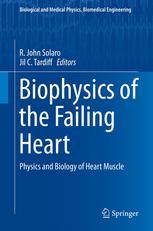

Most ebook files are in PDF format, so you can easily read them using various software such as Foxit Reader or directly on the Google Chrome browser.
Some ebook files are released by publishers in other formats such as .awz, .mobi, .epub, .fb2, etc. You may need to install specific software to read these formats on mobile/PC, such as Calibre.
Please read the tutorial at this link: https://ebookbell.com/faq
We offer FREE conversion to the popular formats you request; however, this may take some time. Therefore, right after payment, please email us, and we will try to provide the service as quickly as possible.
For some exceptional file formats or broken links (if any), please refrain from opening any disputes. Instead, email us first, and we will try to assist within a maximum of 6 hours.
EbookBell Team

4.8
44 reviewsSubjects in the monograph “Biophysics of the Failing Heart” include state of the art chapters considering major biophysical mechanisms for why hearts responding to acquired or inherited stressors enter into maladaptive processes eventually leading to an inability of the heart to respond efficiently to hemodynamic loads especially during exercise. The chapters describe biophysical techniques that have been applied to determine the triggers for the heart failure process as well as the mechanisms for sustaining the disorders. These techniques include measurements of active and passive mechanical properties and hemodynamics at levels of organization ranging from molecules to hearts beating in situ. Biophysical concepts and approaches are also applied to determination of signaling and signal transduction, energetics, ionic currents, transport processes, electro-chemical and chemo-mechanical coupling. By its emphasis on biophysical aspects of a prevalent clinical condition, the monograph is unique in its perspective and focus. The breadth of information in the chapters all in one place will be of value to clinicians and researchers at all levels. Modern research approaches and clinical understanding of heart failure demands integration of multiple aspects of the disorders. In most cases, combinations of clinician scientists and researchers author the chapters. A main benefit of the book is couched in its didactic approach together with its emphasis on how biophysical concepts and techniques aid in diagnosis and development of new therapies.